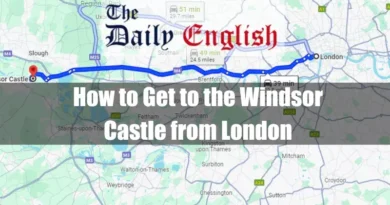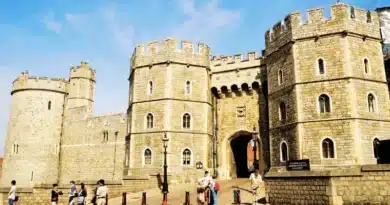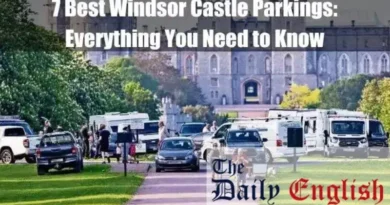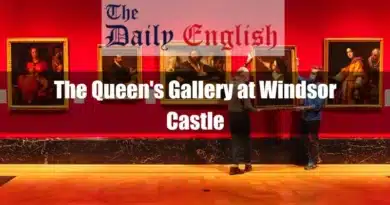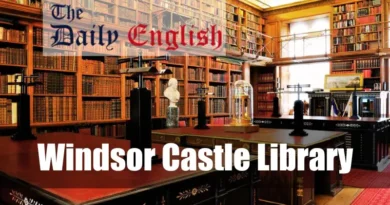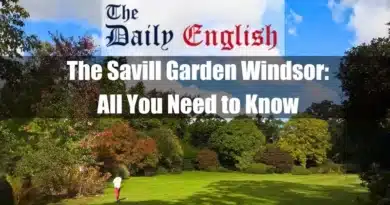Get to Windsor Castle From Fareham?
To travel from Fareham to Windsor Castle, you can drive, take a train, or use a combination of public transport. Driving via the M3 is the most direct option, covering approximately 72 miles in about 1 hour and 48 minutes under ideal conditions. Alternatively, the A3 route offers a slightly shorter distance of 71.5 miles, with a similar travel time. By train, the journey takes around 2 hours 10 minutes to 2 hours 51 minutes, depending on the route, with connections typically at Reading or Slough. The train is ideal for avoiding traffic and parking hassles while driving and provides flexibility. The fastest and most efficient option is taking a direct train to Windsor & Eton Riverside via Reading, offering a blend of speed and convenience.
Takeaways
| Key Points |
|---|
| Driving from Fareham to Windsor Castle takes about 1 hour and 47 to 1 hour and 54 minutes, with routes via the M3, A3, or M3/M4 offering options for speed and scenery. |
| By train, the journey ranges from 2 hours 10 minutes to 2 hours 51 minutes, depending on the number of transfers and connection efficiency, with Reading and Slough being common transfer points. |
| Cycling to Windsor Castle can take between 5 hours 21 minutes and 5 hours 55 minutes, with routes varying in distance from 60.7 to 66.7 miles, offering a mix of scenic countryside and suburban roads. |
| Factors like traffic, roadworks, weather, and navigation errors can impact driving times, making train travel a more reliable option for avoiding delays. |
| The fastest train route involves a direct service to Windsor & Eton Riverside via Reading, minimizing wait times and transfers. |
| Scenic cycling routes like the National Cycle Route 23 or Lippen Lane offer a rewarding mix of greenery, rolling hills, and tranquil roads for cycling enthusiasts. |
Getting to Windsor Castle from Fareham by Car
Route via M3
The journey from Fareham to Windsor Castle via the M3 is approximately 72.4 miles, and under ideal conditions, it takes about 1 hour and 48 minutes.
Step-by-Step Directions:
- Start your journey in Fareham by heading west on New Road for 177 feet.
- Take a left to remain on New Road for another 210 feet.
- Make a right turn onto Gordon Road and continue for 200 feet.
- Turn left onto Grove Road, driving for 0.1 miles.
- Turn right onto West Street and proceed for 302 feet.
- At Station Roundabout, take the first exit onto Western Way (A27) and continue on this road for 0.5 miles.
- Merge onto Quay Street Roundabout, continuing for 164 feet.
- Slightly veer right onto Eastern Way (A27), continuing for 305 feet.
- Continue on Eastern Way (A27/A32) by veering left and follow the A27 for 1 mile.
- Reach the roundabout and take the first exit onto the M27 ramp, following signs for Southampton/Alton/A32. Travel 0.5 miles to merge onto the M27.
- Stay on the M27 for 11.9 miles. Be sure to keep right to remain on the M27 for another 1.2 miles.
- At Junction 4, take the exit for the M3 towards The Midlands, London, or Winchester. Continue on the ramp for 1.1 miles to merge onto the M3.
- Stay on the M3 for a considerable stretch of 44.4 miles.
- At Junction 3, take the exit for A322 towards Woking and Bracknell. Travel on this ramp for 0.2 miles.
- Take the first exit onto the A322 at the roundabout, driving 1.7 miles.
- Keep right to stay on Bracknell Road (A322) for 0.1 miles.
- Take the second exit onto Swinley Road (A332) at the roundabout. Follow this road for 2.7 miles.
- Reach another roundabout and take the second exit onto Kings Ride (A332). Drive for 0.1 miles.
- At the next roundabout, take the second exit to continue on Windsor Road (A332) for 2.3 miles.
- At yet another roundabout, take the fourth exit to stay on the A332. Travel on this road for 3.3 miles.
- Take the third exit onto Kings Road at the following roundabout, continuing for 0.5 miles.
- Drive onto Sheet Street (B3022), passing through one roundabout. Note that some sections of this road may be closed on certain days or times. Continue for 0.3 miles.
- Turn right onto Castle Hill, travelling a final 266 feet to arrive at Windsor Castle.
This picturesque route offers a smooth drive through major motorways and serene suburban roads, leading you to the historic Windsor Castle.
Route via A3
The journey from Fareham to Windsor Castle via the A3 is approximately 71.5 miles, and under perfect conditions, it takes about 1 hour and 47 minutes.
Step-by-Step Directions:
- Begin your journey in Fareham by heading west on New Road for 177 feet.
- Turn left to remain on New Road for 210 feet.
- Make a right turn onto Gordon Road and continue for 200 feet.
- Turn left onto Grove Road, driving for 0.1 miles.
- Turn right onto West Street and proceed for 302 feet.
- At Station Roundabout, take the first exit onto Western Way (A27) and continue for 0.5 miles.
- Merge onto Quay Street Roundabout, then continue for 164 feet.
- Slightly veer right onto Eastern Way (A27), continuing for 305 feet.
- Continue on Eastern Way (A27/A32) by veering left and following the A27 for 1 mile.
- Take the third exit onto the M27 ramp at the roundabout, heading towards Portsmouth/M275/Brighton. Drive for 0.6 miles to merge onto the M27.
- Continue on the M27 for 4.2 miles, merging onto the Havant Bypass (A27) for 2.3 miles.
- Take the A3(M) ramp toward Petersfield/London/Leigh Park/Waterlooville. Continue for 0.2 miles to merge onto the A3(M).
- Stay on the A3 for 5.6 miles, then continue on the A3 for 11.1 miles.
- At Ham Barn Roundabout, take the second exit onto the Liphook – Petersfield Bypass (A3) and follow this road for 29 miles.
- Take the M25 ramp toward Heathrow Airport/Chertsey/Gatwick Airport/Leatherhead, travelling 0.2 miles.
- Keep left at the fork to stay on Exit 10, merging onto the M25 for 9.8 miles.
- At Junction 13, exit onto the A30 toward London (W)/Hounslow/Staines. Continue for 0.2 miles, merging onto the A30.
- Take the fourth exit at the roundabout to remain on the A30, heading towards A308/Bagshot/Egham/Windsor. Travel for 1.2 miles.
- Merge onto The Glanty (A308), continuing for 0.1 miles.
- Slightly veer left onto Windsor Road (A308) for 1.8 miles.
- At the roundabout, take the second exit onto Straight Road (A308) and continue for 2.2 miles.
- Take the fourth exit onto Kings Road at the next roundabout and drive for 0.5 miles.
- Continue on Sheet Street (B3022), passing through one roundabout. Note that parts of this road may be closed on certain days or times. Travel for 0.3 miles.
- Turn right onto Castle Hill, driving the final 266 feet to reach Windsor Castle.
This scenic route takes you through tranquil countryside and major motorways, leading you to the majestic Windsor Castle with an easy and straightforward drive.
Route via M3 and M4
The journey from Fareham to Windsor Castle via the M3 and M4 is approximately 77.6 miles, and under ideal conditions, it takes about 1 hour and 54 minutes.
Step-by-Step Directions:
- Begin your journey in Fareham by heading west on New Road for 177 feet.
- Turn left to remain on New Road for 210 feet.
- Make a right turn onto Gordon Road and continue for 200 feet.
- Turn left onto Grove Road, driving for 0.1 miles.
- Turn right onto West Street and proceed for 302 feet.
- At Station Roundabout, take the first exit onto Western Way (A27) and continue for 0.5 miles.
- Merge onto Quay Street Roundabout, then continue for 164 feet.
- Slightly veer right onto Eastern Way (A27), continuing for 305 feet.
- Continue on Eastern Way (A27/A32) by veering left and following the A27 for 1 mile.
- At the roundabout, take the first exit onto the M27 ramp toward Southampton/Alton/A32, travelling 0.5 miles.
- Merge onto the M27 and continue for 11.9 miles.
- Keep right to stay on the M27 for another 1.2 miles.
- At Junction 4, take the exit for the M3 towards The Midlands, London, or Winchester, and continue on this ramp for 1.1 miles to merge onto the M3.
- Stay on the M3 for 26 miles, heading toward Basingstoke/Newbury/A339/Alton/Reading/A33.
- At Junction 6, exit toward Basingstoke/Newbury/A339/Alton/Reading/A33, travelling 0.3 miles.
- At Black Dam Interchange, take the first exit onto the M3 heading toward A33/Newbury/Alton/Reading. Travel 0.3 miles before continuing on the A339 for 0.9 miles.
- Take the A33 ramp toward Reading/Oakridge/Popley/Chineham for 0.2 miles.
- Take the fourth exit onto the A33 at the roundabout and continue for 0.7 miles.
- Take the third exit at Crockford Roundabout and stay on the A33 for 0.4 miles.
- At Binfields Roundabout, take the second exit and stay on the A33 for 1.5 miles.
- Take the second exit at Taylor’s Farm Roundabout and stay on the A33 for 1.4 miles.
- Take the second exit at the roundabout and stay on the A33 for another 4.4 miles.
- At the following roundabout, take the second exit and stay on the A33 for an additional 4.1 miles.
- At the next roundabout, take the fourth exit onto the M4 ramp to London, travelling for 0.6 miles.
- Merge onto the M4, travelling for 0.2 miles.
- Stay on the M4 for 17.1 miles.
- Take the exit toward A355 for 0.3 miles.
- Take the third exit onto A355 at the roundabout and continue for 0.5 miles.
- Continue on Royal Windsor Way (A332) for 1.2 miles.
- Slightly veer left onto Clarence Road, passing through one roundabout for 0.5 miles.
- Continue onto Victoria Street for 0.3 miles.
- Take the first exit onto Sheet Street (B3022) at the roundabout, continuing for 0.2 miles. Note that parts of this road may be closed on certain days or times.
- Turn right onto Castle Hill and travel the final 266 feet to Windsor Castle.
This route offers a seamless drive through two major motorways and various scenic roads, making it an easy and picturesque journey to the historic Windsor Castle.
Time Delaying Factors
The times via car for this journey may differ due to several factors, including:
- Traffic Congestion: Heavy traffic, particularly during peak hours, can significantly increase travel time.
- Roadworks and Construction: Ongoing roadwork or construction projects can lead to lane closures and detours.
- Weather Conditions: Adverse weather, like rain, fog, snow, or ice, can reduce driving speed and increase travel time.
- Accidents and Collisions: Unexpected accidents or collisions on the route can lead to delays due to road closures or traffic diversions.
- Traffic Lights and Junctions: Frequent stops at traffic lights or busy junctions can add to the overall journey time.
- Rush Hour: Increased traffic volume during rush hour, typically in the morning and evening, may cause delays, especially near urban centres.
- Vehicle Issues: Mechanical breakdowns or vehicle-related issues could delay the trip.
- Fuel Stops: Frequent or unexpected fuel or rest stops can extend travel time.
- Holiday and Event Traffic: Increased traffic due to public holidays, festivals, or large events along the route.
- Tolls and Checkpoints: Delays at toll booths or security checkpoints along the route may contribute to longer travel times.
- Navigation Errors: Incorrect directions or detours due to navigation device errors could cause time delays.
Be prepared for these potential delays to ensure a more flexible travel schedule.
Getting to Windsor Castle from Fareham by Train
The travel times for the listed routes range approximately from 2 hours 10 minutes to 2 hours 51 minutes, resulting in a time difference of about 41 minutes. These durations are based on ideal conditions, assuming no delays, smooth transitions between trains, and efficient walking times at transfer stations.
Factors Affecting Time Differences
- Number of Transfers
- Shortest Journeys (About 2 Hours 10 Minutes): These routes involve fewer transfers and have well-coordinated schedules with minimal waiting times between trains. For example, connections in Reading or Slough are often optimised for quick transitions.
- Longest Journeys (About 2 Hours 51 Minutes): Include additional transfer points (like Basingstoke) and involve longer waiting times between trains. These extra stops and layovers add significant time to the journey.
- Transfer Wait Times
- Tighter Connections: Routes with minimal waiting times at intermediate stations ensure shorter travel durations. For instance, when timed efficiently, connections at Reading or Slough allow travellers to move quickly to their next train.
- Extended Layovers: Some routes require longer waits between trains. For example, a 23-minute layover in the longest route at Basingstoke contributes significantly to the extended travel time.
- Train Speeds and Services
- High-Speed Services: Routes incorporating faster services, such as CrossCountry, the Elizabeth line, or GWR, reduce travel times. For instance, the Elizabeth line provides a direct, high-speed connection from Reading to Slough.
- Slower Regional Trains: Journeys that depend on slower regional services or trains with frequent stops take longer to complete.
- Station Layouts and Walking Times
- The efficiency of station layouts and walking times between platforms can impact travel durations:
- Short Walking Distances: Stations like Slough require a short walk (about 32 meters) to switch platforms, minimising delays.
- Longer Walking Times: Stations such as Southampton Central involve walking distances of up to 100 meters, potentially adding a minute or two to the transfer time.
- The efficiency of station layouts and walking times between platforms can impact travel durations:
- Time of Day and Train Schedules
- Peak Hours: Train schedules during peak hours are more frequent and provide better-coordinated connections, leading to shorter total travel times.
- Off-Peak Hours: Reduced train frequency during off-peak hours often results in longer wait times between trains, extending the journey.
- Ideal Conditions
- These travel times are calculated under ideal conditions, meaning:
- Trains run on schedule with no delays.
- Transfer stations are easily navigable, and walking distances are completed within expected times.
- There are no disruptions due to maintenance, cancellations, or other unforeseen circumstances.
- These travel times are calculated under ideal conditions, meaning:
Comparison of Durations and Key Insights
- Shortest Journey (About 2 Hours 10 Minutes):
- Features efficient connections, fewer transfers, and faster train services.
- Most suitable for travellers who prioritise speed and convenience.
- Longest Journey (About 2 Hours 51 Minutes):
- Includes additional stops, extended transfer times, and slower services.
- Suitable for travellers during off-peak hours or those who prefer a more relaxed schedule.
Why the Time Difference Exists
The time difference of approximately 41 minutes between the fastest and slowest journeys can be attributed to the following factors:
- Variation in Transfer Locations: Routes with additional stops and transfer points (e.g., Basingstoke) inherently take longer.
- Frequency of Train Services: Off-peak schedules introduce longer wait times at transfer stations.
- Type of Train Used: High-speed services reduce travel times, while slower regional trains with more stops extend the duration.
- Efficiency of Transfers: Tight connections versus extended layovers significantly impact the overall travel time.
By understanding these factors, travellers can make more informed decisions about their route, particularly when planning specific arrival times at Windsor Castle.
Getting to Windsor Castle from Fareham by Cycling
Via National Cycle Route 23
This scenic route covers approximately 66.7 miles and takes about 5 hours and 55 minutes to complete. Starting in Fareham, you’ll navigate through charming roads such as Wickham Road and North Hill before joining National Cycle Route 23. The journey passes through serene villages like Mislingford and Kilmeston, offering a mix of lush greenery, quiet lanes, and light rolling hills. The terrain transitions to suburban roads and parklands as you approach Windsor, ensuring a satisfying and varied cycling experience. This route is ideal for cycling enthusiasts who enjoy both adventure and sightseeing.
Via A32
Spanning about 61.4 miles and taking approximately 5 hours and 27 minutes, this route offers a more efficient journey without compromising scenic value. From Fareham, you’ll travel along the A32, which features smooth cycling interspersed with gentle hills. Along the way, you’ll pass through charming spots like Gaston Lane and enjoy serene woodlands and countryside views. As you near Windsor, the route transitions into tranquil village roads, offering a pleasant and rewarding approach to the castle. This path is great for cyclists seeking a balance between speed and scenery.
Via Lippen Lane and A32
At about 60.7 miles and taking roughly 5 hours and 21 minutes, this route is the shortest of the three. Starting on the A32 and turning onto Lippen Lane, the ride offers beautiful countryside views and a mix of rolling hills and flat stretches. Winding lanes and brief climbs add variety to the route, culminating in scenic descent toward Windsor. This path combines speed and natural beauty, making it an excellent choice for riders who prefer a quicker journey without sacrificing the enjoyment of a picturesque ride.
Conclusion
Travelling from Fareham to Windsor Castle offers a variety of options to suit different preferences. Driving provides flexibility and control, with routes via the M3, A3, or a combination of the M3 and M4 offering varying distances and scenery. Train travel is a convenient alternative, particularly for avoiding traffic and parking concerns, with journey times ranging from 2 hours 10 minutes to 2 hours 51 minutes, depending on connections and schedules. Cycling is a scenic and adventurous choice for enthusiasts, with routes that vary in distance and terrain. Each mode of transportation offers unique benefits, allowing travellers to tailor their journey to their priorities, whether speed, convenience or the joy of exploration.
FAQ
What is the fastest & convenient way to get to Windsor Castle from Fareham?
The quickest and convenient route is by train. Take a train from Fareham to London Waterloo, then switch to a South Western Railway service to Windsor & Eton Riverside. The journey takes around 2.5 hours, depending on connections.
Can I drive to Windsor Castle from Fareham?
Yes, driving is an option. Take the M27 to the M3, then join the M25 and exit onto the M4. Use the A332 for Windsor. The trip is about 75 miles and takes roughly 1.5 to 2 hours, depending on traffic.
Is there a direct train from Fareham to Windsor Castle?
There isn’t a direct train. You’ll need to change at least once, usually at London Waterloo or Clapham Junction, before heading to Windsor & Eton Riverside station.
How much does a train ticket from Fareham to Windsor Castle cost?
Train fares vary, but a standard return ticket typically costs between £30-£50. Book in advance to save money, and consider off-peak times for cheaper fares.
How long does it take to get to Windsor Castle by car from Fareham?
Usually, driving takes about 1.5 to 2 hours, depending on traffic conditions. Avoid peak times to reduce delays, particularly on the M25.
Are there coach services from Fareham to Windsor Castle?
There are no direct coaches, but you can take a National Express coach to London Victoria Coach Station and then transfer to a local bus or train to Windsor. The journey takes 3 to 4 hours.
What is the most scenic route from Fareham to Windsor Castle?
Take the A32 through Alton and Farnham for a scenic drive, then follow the A31 to Guildford. From there, join the M25 and M4 to Windsor. This route offers countryside views and picturesque villages.
Can I take a taxi or private hire from Fareham to Windsor Castle?
Yes, a taxi or private hire vehicle is possible but expensive. The journey costs approximately £200-£250 one-way and takes about 1.5 to 2 hours.
What train services operate between Fareham and Windsor Castle?
South Western Railway operates services from Fareham to London Waterloo. Switch to another South Western Railway train to Windsor & Eton Riverside from there.
Is parking available at Windsor Castle?
Parking isn’t available directly at the castle. Use public car parks such as River Street or Alexandra Gardens, a short walk away. Charges apply, and spaces fill quickly during peak times.
Can I cycle from Fareham to Windsor Castle?
Cycling is possible but challenging, as the distance is around 75 miles. The route involves busy roads like the A3 and M25 junctions, so plan carefully and prioritise safety.
Are there any guided tours from Fareham to Windsor Castle?
No direct tours operate from Fareham. However, some operators in London offer guided trips to Windsor Castle. You could combine a train or coach trip to London with a tour package.
How do I travel from Fareham to Windsor Castle using public transport?
Use a combination of trains or buses. Take a train to London Waterloo, change to a Windsor-bound service, or take a coach to London Victoria and continue via train or bus to Windsor.
Are there bus services from Fareham to Windsor Castle?
There are no direct buses. You’d need to travel to London first and then take a local service to Windsor. This option is slower but cost-effective.
Is there a train station near Windsor Castle?
Yes, Windsor & Eton Riverside and Windsor & Eton Central stations are both within a short walk of the castle. Riverside is the more convenient option if travelling from Fareham.
What’s the cheapest way to get to Windsor Castle from Fareham?
The cheapest option is by train, booking in advance and travelling off-peak. Purchase a return ticket. Avoid taxis or private hire vehicles if you’re on a budget.
What’s the best time to travel to Windsor Castle from Fareham?
Travel during off-peak hours to avoid crowds and save money. Weekdays outside commuter times (10 am to 3 pm) are ideal for a smoother journey.
Can I book tickets to Windsor Castle in advance?
Yes, booking tickets online is recommended to secure your entry. Visit the Windsor Castle website for the latest prices and availability.
Are there accessible options for travelling from Fareham to Windsor Castle?
Yes, trains and most public transport options have accessible features. Check with South Western Railway for specific assistance, and use Windsor’s accessible car parks if driving.




